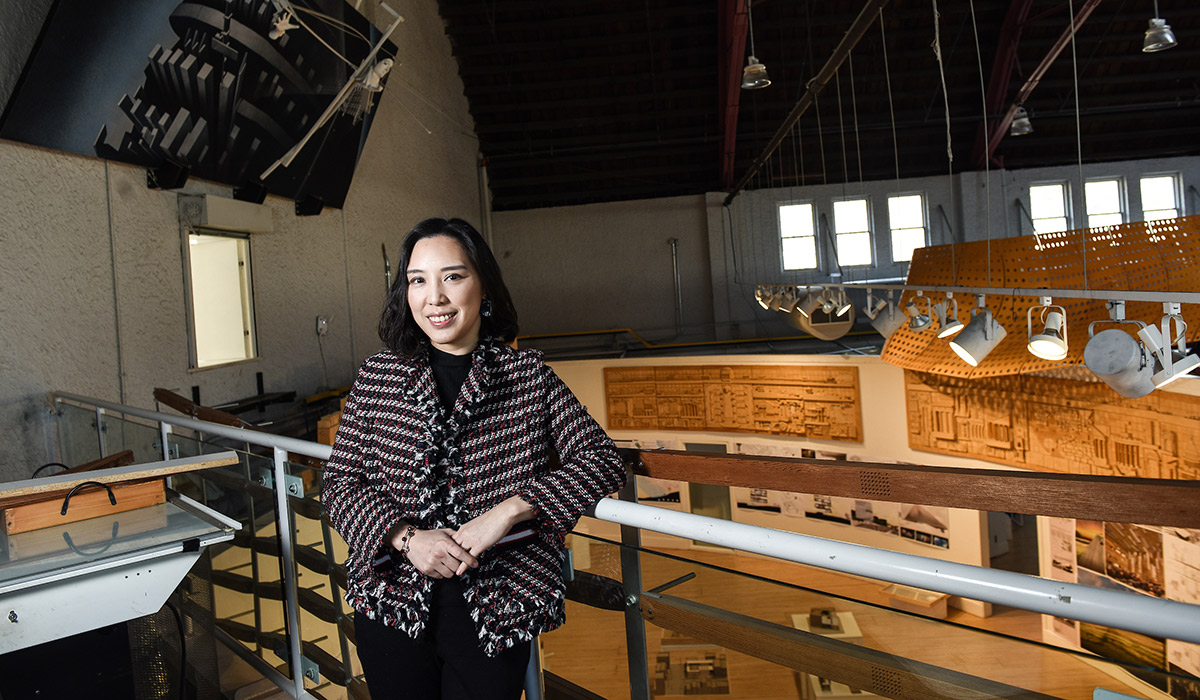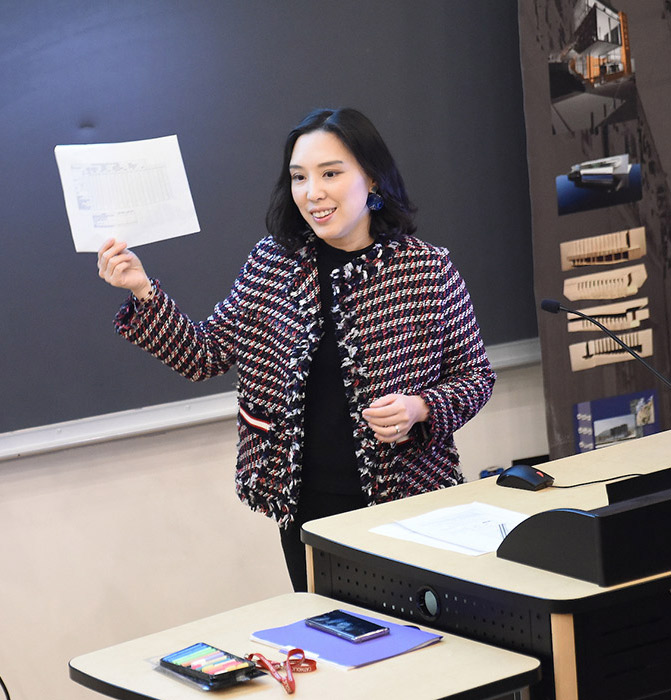

Hyojin Kim was originally thinking of majoring in math in college while in her native South Korea, but a first-ever TV show there featuring a home renovation for a low-income family lit a fire in her heart, and she decided on interior architecture instead.
As she studied, she learned that architecture is not only about the style and beauty of the structure, but whether it is serving the occupants’ basic needs.
“Architecture is half art and half science,” says Kim, assistant professor in the School of Architecture and Planning. “It must be architecturally appealing but must also support occupant well-being and comfort.”
 As she pursued her master’s degree, she became more fascinated with building science — in particular, low-energy buildings and indoor environmental quality — focusing on both energy efficiency and how indoor air affects occupant comfort. At that time, there were no regulations for indoor air quality in Korea.
As she pursued her master’s degree, she became more fascinated with building science — in particular, low-energy buildings and indoor environmental quality — focusing on both energy efficiency and how indoor air affects occupant comfort. At that time, there were no regulations for indoor air quality in Korea.
Through a grant from a South Korean government-sponsored foundation, Kim won an award for international study. During her six-month study at the University of Oregon, she traveled across the United States. The experience opened her eyes and heart to the possibility of staying in America.
With a fellowship from Texas A&M University, she returned to the U.S. for her doctorate. Her advisor at Texas A&M, Professor Jeff Haberl, became not just her academic advisor, but a life mentor. “Because all my family of origin members are still in Korea, Professor Haberl has become my American dad,” says Kim.
Kim’s graduate courses are small and highly sought after — her 2015 and 2017 students have won prestigious awards. Her classes feature hands-on learning as students divide into teams and take on the roles of professionals involved in sustainable building design. The students work together to design or redesign a structure and demonstrate advanced knowledge of high-performance green buildings.
Kim sees her mission as teaching her students — future architects — to be responsible stewards of our natural and indoor environment. “Their decisions will impact a building’s lifelong performance in providing a comfortable and energy-efficient indoor environment for workers or residents. Students need to understand their future power!”
Kim’s research has developed new analytical methods to evaluate the impact of new building design and technologies on energy savings and occupant comfort. Her research has been funded by Samsung Electronics, the National Institute of Standards and Technology, and the National Center for Preservation Technology and Training.